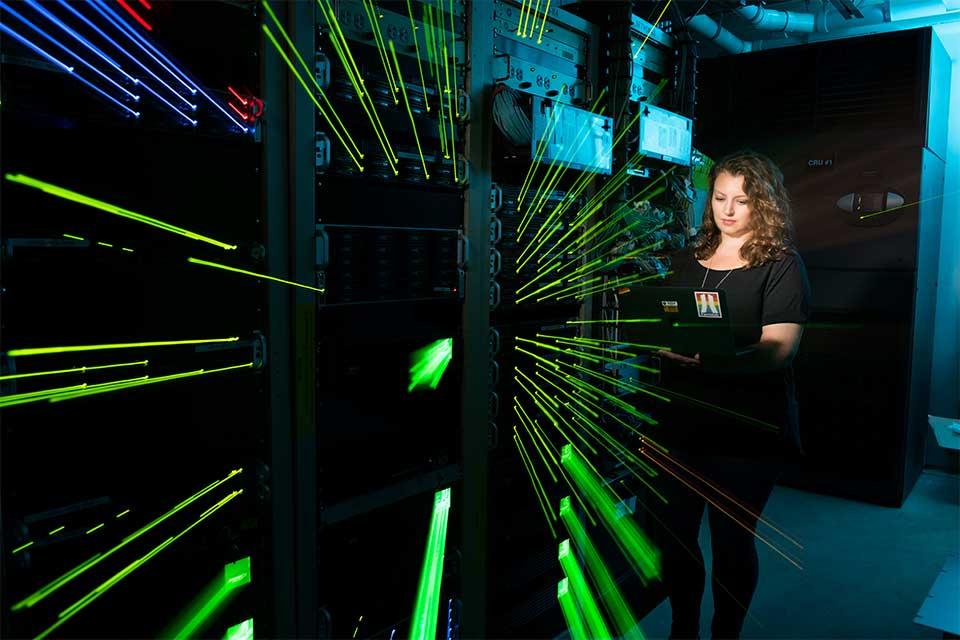New results from Oxford researchers, together with collaborators on the MicroBooNE experiment, show no signs of a theorised fourth kind of neutrino known as the sterile neutrino. Its existence is considered a possible explanation for anomalies seen in previous physics experiments.
University of Oxford researchers played a crucial role in new results from the MicroBooNE experiment at Fermi National Accelerator Laboratory (Fermilab) that show no sign of a theroetical particle known as the sterile neutrino. For more than two decades, this proposed fourth neutrino has remained a promising explanation for anomalies seen in earlier physics experiments. However, four complementary analyses presented during a seminar today all show the same thing: no sign of the sterile neutrino. One of these analyses was first developed by former Oxford researchers Roxanne Guenette, Roberto Soleti, Wouter Van De Pontseele, and Marco Del Tutto as well as Professor Giles Barr.
‘Neutrinos may be the most important fundamental particle you’ve never heard of,’ says Dr Kirsty Duffy, UKRI Future Leaders Fellow at the University of Oxford. ‘They are the most common matter particle in the universe: they are created in stars, the Sun, and the centre of the Earth, and even in the bananas in your kitchen. Millions of them pass through your thumbnail every second. But neutrinos are also very mysterious – they hardly ever actually interact (most of them pass through us like we are not even there), and there is a lot we don’t know about them. One of the most basic things we don’t know: how many kinds of neutrinos are there?’
Getting to know neutrinos
Scientists know about three kinds of neutrinos, called ‘electron neutrinos’, ‘muon neutrinos’, and ‘tau neutrinos’, but a number of anomalous results had many scientists questioning if that is all there are. One of these anomalous results came from another experiment at Fermilab, called MiniBooNE. MiniBooNE scientists measured more electron neutrinos than they expected coming from Fermilab’s particle accelerators, and some proposed that it could have been evidence of interference from a new particle, the sterile neutrino.
Dr Duffy continues: ‘MicroBooNE set out to test the MiniBooNE anomaly, using a state-of-the art liquid argon detector that is able to show us neutrino interactions in exquisite detail. We looked for different types of electron neutrino interactions, and also some interactions of other neutrinos that could produce photons. Those could easily be mistaken for electron neutrinos in MiniBooNE, but we can tell them apart.’ Dr Duffy’s work has focused on predicting what the experiment would expect to see if there were no fourth neutrino. ‘We are looking for an excess of electron neutrinos – for more of these interactions than we expect,’ says Dr Duffy. ‘To do that, we need a really solid understanding of what we do expect, if our theories are right. I have worked on making sure we have a really solid prediction of what we expect to see, so we can say with confidence if we see something different.’
But that is not what MicroBooNE sees. Instead, the results are in line with the Standard Model of particle physics, scientists’ best theory of how the universe works. The data is consistent with what the Standard Model predicts – no more, no less.
Time for a new theory?
So, does that mean the sterile neutrino theory is over? It is hard to say, says Fermilab scientist Dr Sam Zeller, who served as MicroBooNE co-spokesperson for eight years. ‘We are not seeing what we would have expected from a MiniBooNE-like signal, neither electrons nor the most likely of the photon suspects. But that earlier data from MiniBooNE doesn’t lie. There’s something really interesting happening that we still need to explain.’
‘This is a really exciting time for neutrino physics,’ concludes Dr Duffy. ‘We have a lot of questions about neutrinos and we are just getting to the point that we can really answer them. Our results make the light sterile neutrino hypothesis seem less likely but there is still a mystery we need to understand. It is exciting because neutrinos are so important to the makeup and evolution of the universe – it is possible that they could be the reason the universe exists at all. So, if we want to understand the universe, we really have to understand neutrinos.’
Interested and want to learn more?
Read Fermilab’s news story about these results.
Watch the Even Bananas video series about neutrinos, featuring UKRI Future Leaders Fellow at the University of Oxford Dr Kirsty Duffy.
Take a virtual tour inside the MicroBooNE detector, developed by former Oxford researcher Marco del Tutto.
Visit the MicroBooNE website.

